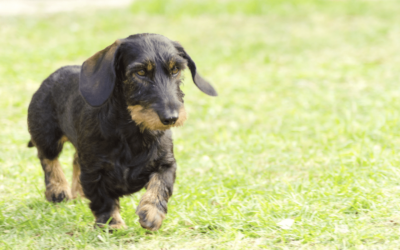Dogs with the Least Health Problems [Small & Large]

Updated October 12, 2025
When thinking about adding a new dog to your family, one of the things you’ve probably considered is the common health issues each dog breed has. Are Beagles susceptible to ear infections? Is an Australian Shepherd prone to hip issues? Which breeds experience poor eye health? These health problems should not be the ultimate determining factor in whether or not you move forward with adding a dog to your family, but knowing these breed health concerns can help you plan for any challenges that may arise in the future.
While your dog is not guaranteed to experience a condition specific to its breed, it’s essential to know if you’ll be able to mentally and financially handle the treatments and care that come with the health issue. We’ve compiled a list of the dogs with the least health problems to help you determine the next breed that is right for you and your family.
Dogs with the Least Health Issues
Australian Cattle Dog
Known for cattle herding, the Australian Cattle Dog is energetic and able to work or exercise for long hours. This breed is perfect for families who enjoy hiking, camping, and outdoor activities. Australian Cattle Dogs are high achievers and independent, making them trustworthy enough to be left alone with a herd. They should be given plenty of mental and physical stimulation to prevent boredom and potential mischief. Weighing an average of 35 to 50 pounds and standing at 17 to 20 inches at the shoulder, these dogs are of a medium build. With two layers of either a red or blue coarse coat, this breed can survive a wide array of harsh conditions, including rain.
Australian Cattle Dogs are bred to live an average lifespan of 10 to 13 years. While they are generally one of the healthiest dog breeds, they have some major health concerns, including canine hip dysplasia (CHD), elbow dysplasia, progressive retinal atrophy (PRA), and deafness. They may also struggle with lens luxation and cataracts. It’s important to discuss your Australian Cattle Dog’s specific health needs with your vet to ensure they have a long, happy life.
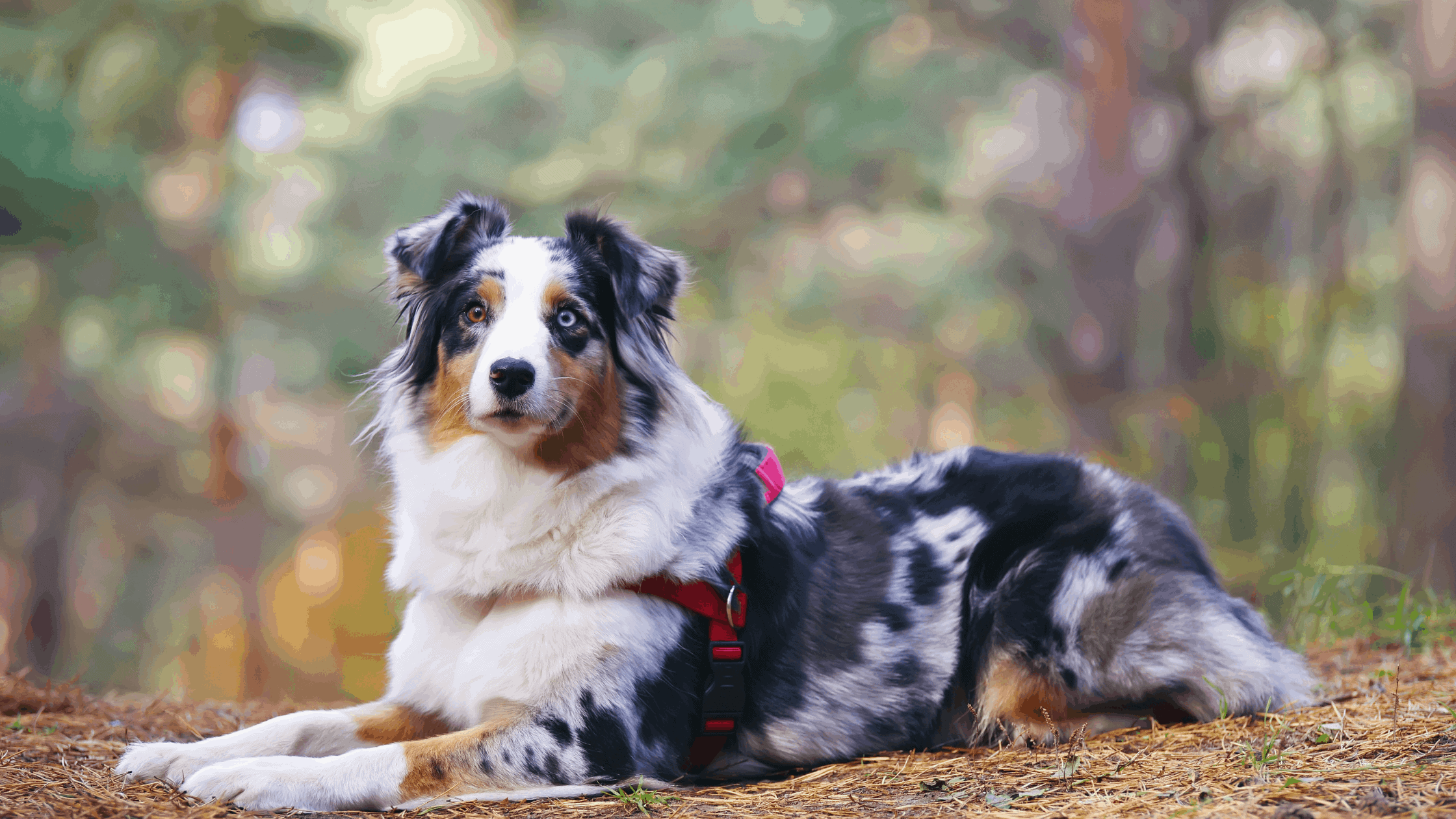
Australian Shepherd
Bred in Europe and mistakenly assumed they originated from Australia, the Australian Shepherd is an intelligent, obedient, and athletic dog. They’re commonly found working on farms, competing in competitions, or working as service dogs. Due to their high-energy and work-oriented mentality, they require regular exercise and activities that provide mental stimulation. They have a strong impulse to herd, making them less suitable for pet owners who prefer a relaxed environment or have young children. The Australian Shepherd’s average height is 18 to 23 inches, and it weighs about 40 to 65 pounds, making it a good-sized medium dog.
Australian Shepherds live an average of 12 to 15 years. They are prone to health conditions, including hip dysplasia, Collie Eye Anomaly, and hypothyroidism. The American Kennel Club recommends getting your Australian Shepherd’s hip, elbow, and ophthalmologist evaluations. Remember to watch your pup’s weight and regularly clean their teeth and ears.
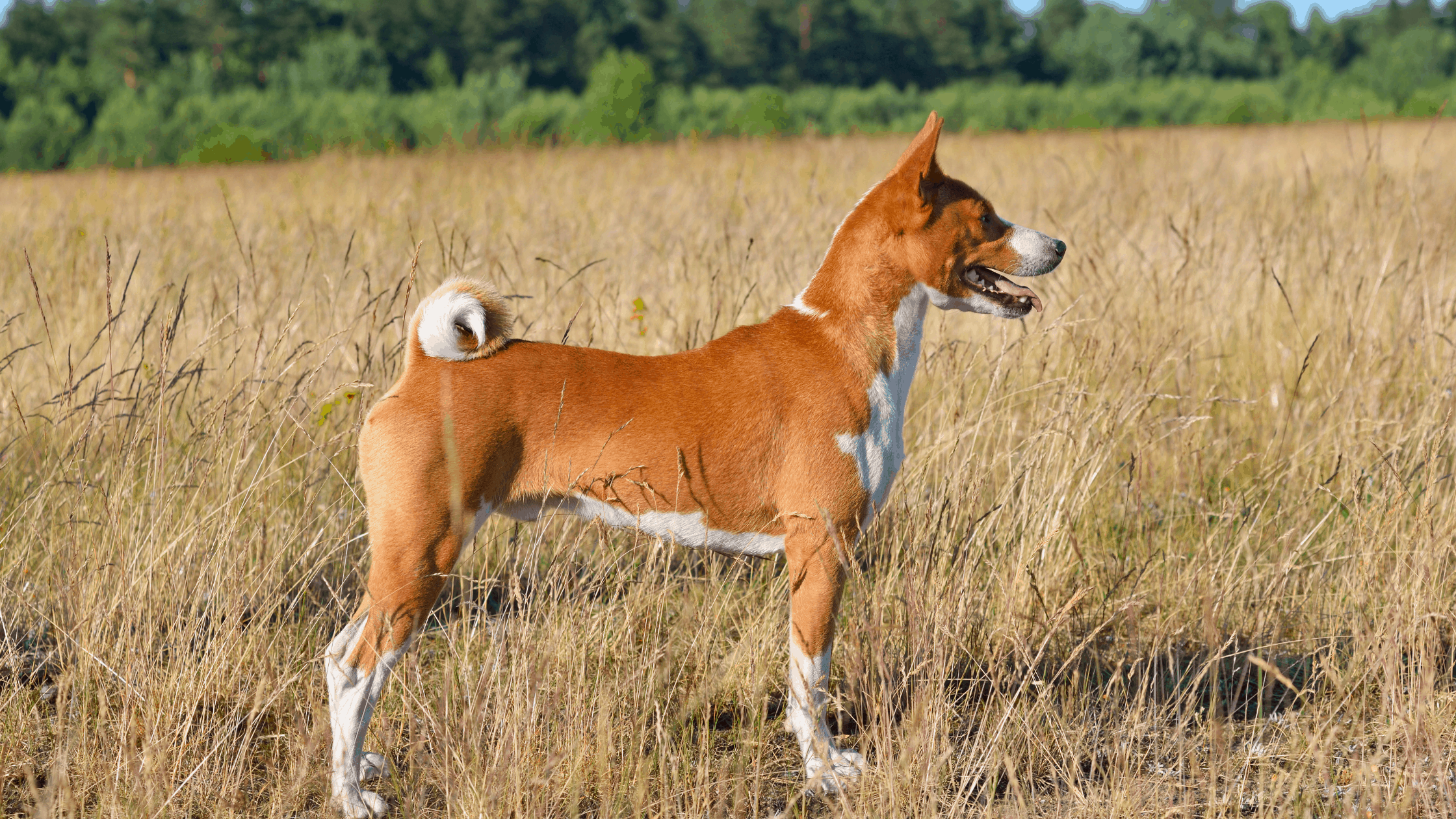
Basenji
The “barkless dog” originated in Egypt and then in Africa as a hunting dog. Later, this breed became popular in the United States as a show dog. The Basenji has a sturdy build with a wrinkled forehead and curled tail. Because of its long legs, the Basenji runs fast. This breed of dog is brilliant, inquisitive, and stubborn. It gets along well with other dogs but does not interact with its own breed. If this dog does not receive enough physical and mental exercise, it could become aggressive or get into trouble from trying to seek this stimulation. The Basenji can be an indoor dog, provided it gets regular time to run outside freely or go for long walks. The Basenji is a relatively small dog, weighing only 20 to 25 pounds and standing 16 to 17 inches tall.
With an average lifespan of 12 to 14 years, the Basenji often struggles with hip dysplasia, PRA, and Fanconi syndrome. This breed may also experience other minor health issues, including umbilical hernia, hypothyroidism, and persistent pupillary membranes (PPM). The Basenji is a sighthound, prone to chasing after prey they see. Because of this, they often experience injury and sometimes death. Be sure to keep your Basenji in an enclosed area or on a leash during exercise.
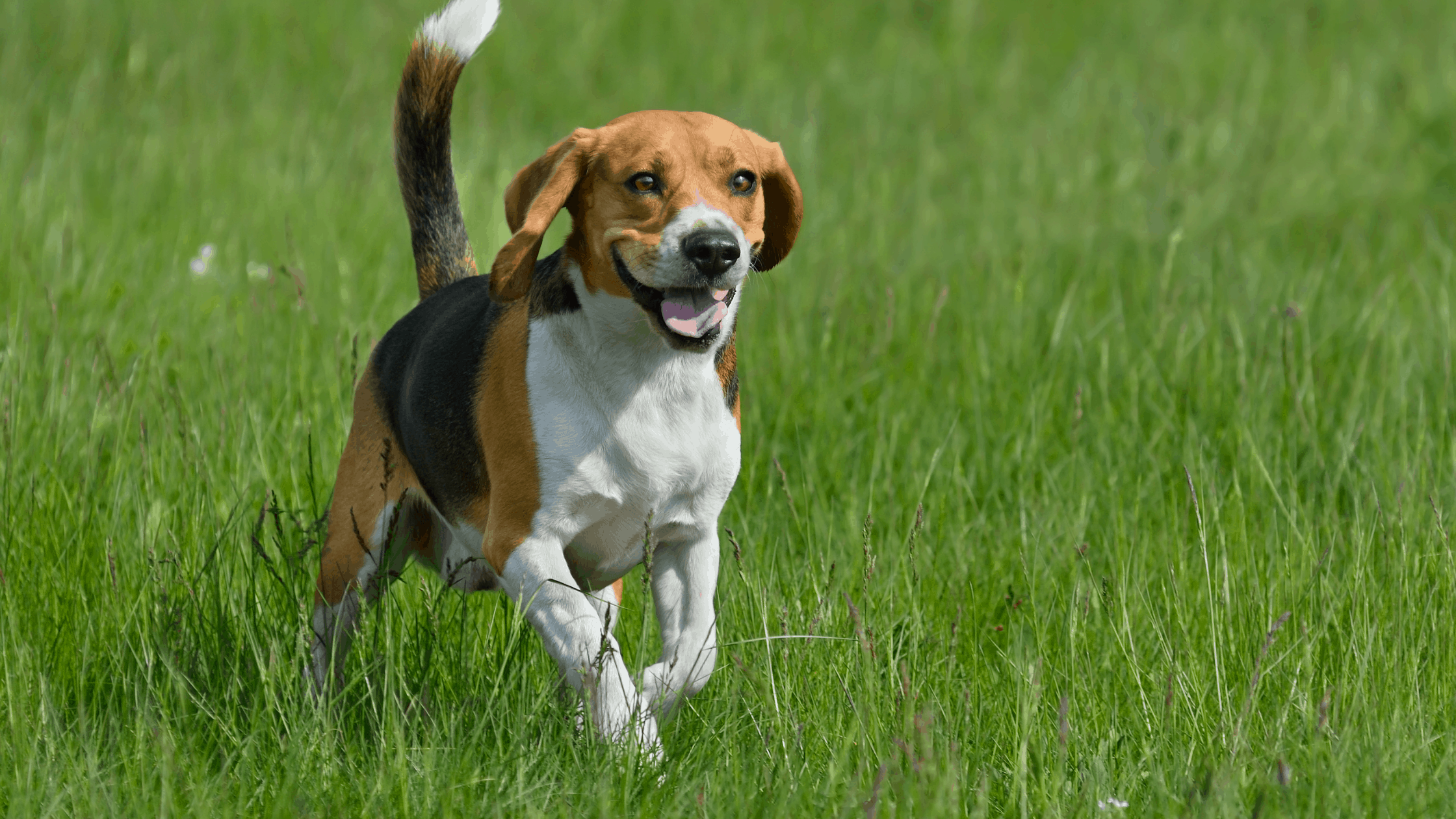
Beagle
With a calm temperament and a keen sense of smell, the Beagle is a top choice for many pet owners and hunters alike. At an average of 15 inches in height and 20 to 25 pounds, Beagles are relatively small. They are very pack-oriented, requiring the company of humans and other dogs. They’re also adventurous and require regular exercise to stay healthy. Due to their tolerant nature, they make great pets for families with children.
As one of the healthiest dog breeds, the Beagle lives an average of 12 to 15 years. A Beagle pet owner should watch for these health issues later in the dog’s life: glaucoma, epilepsy, hypothyroidism, patellar luxation, cherry eye, or deafness. The Beagle may also suffer from intervertebral disk disease. Regular hip, thyroid, and eye tests from your local vet will help detect these conditions early on.

Chihuahua
The smallest dog breed and one of the dogs with the fewest health problems, the Chihuahua is a loyal companion and highly devoted to its owner. This sassy dog is intelligent and protective of its family. Chihuahuas need minimal exercise (a little playtime around the house or a short walk a day is plenty for these little-legged friends), and their coats (which can vary from short to long) do not require much grooming. They weigh between 2 and 6 pounds and are 6 to 9 inches in height.
The Chihuahua has an average lifespan of 14 to 18 years. This breed may experience health conditions such as hypoglycemia, patellar luxation, or keratoconjunctivitis Wicca (KCS). If you decide to get a Chihuahua, look for symptoms of these conditions and openly discuss treatment options with your vet if a symptom does present itself.
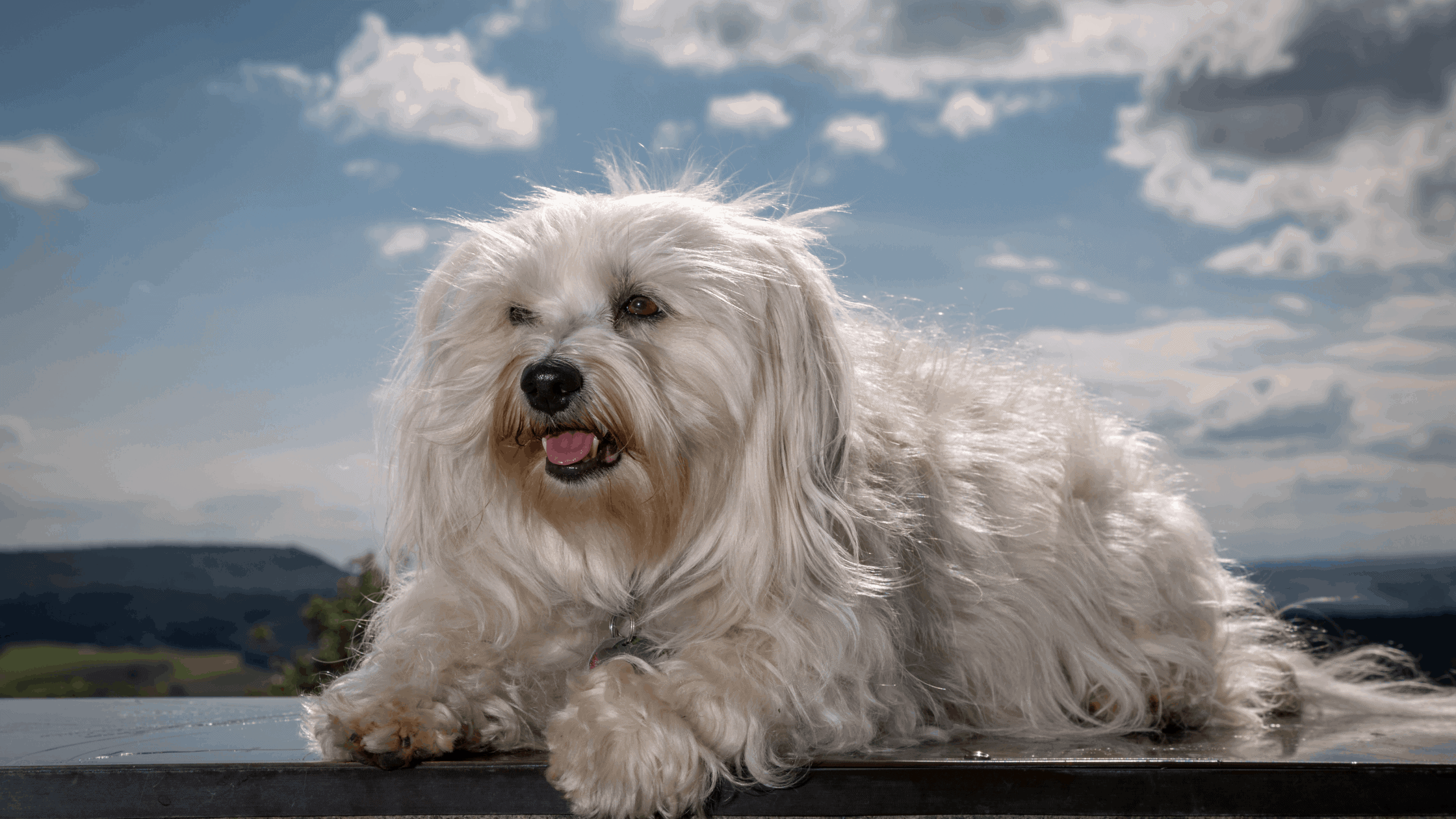
Havanese
A highly friendly and sociable dog, the Havanese makes for a great companion. Bred in Havana, the Havanese is the only dog originating from Cuba. This dog is known for its long, silky hair and tail that curls over its back. It weighs an average of 7 to 13 pounds and is 8.5 to 11.5 inches in height. Extraordinarily bright and eager to please, the Havanese are easy to train. This breed enjoys spending time with people and does not do well left alone for long periods of time. This pup is also very sensitive and does not need to be scolded harshly.
As one of the dogs with the least health problems, the Havanese has an average lifespan of 12 to 14 years. While it is a healthy dog breed, pet owners should be aware of signs of deafness, elbow dysplasia, or patellar luxation in their Havanese. Regular visits to the vet, including tests for their ears, eyes, and hips, can help detect these conditions early enough to start treatment. It’s also recommended to feed your Havanese high-quality food and treats.

Siberian Husky
Full of personality and known as a sled dog, the Siberian Husky is one of the dog breeds with the fewest health problems. This breed of dog loves hiking, walking, and jogging with its owners. While a Husky is playful, energetic, adventurous, and eager to please, this pup also tends to wander and escape, loves to chew or carry things in its mouth, and may attack small animals. Siberian Huskies are very social, and not the greatest watchdogs. They are also highly intelligent, meaning they need a “job” (something that stimulates their mind). As a larger breed, the Siberian Husky weighs between 35 and 60 pounds and is 20 to 23 inches in height.
The Siberian Husky can live an average of 12 to 16 years, which is considered long for dogs of large breeds. It’s important to note that while your Husky could have a long life, he may also be susceptible to hip dysplasia, elbow dysplasia, PRA, cataracts, or hypothyroidism. PetMD recommends finding a local vet and emergency hospital and getting pet insurance to prepare you for any health-related issues with your Siberian Husky.
5 Dog Breeds That Vets Worry About Most
Now that we’ve shown you the dog breeds with the least health problems during ownership, here are five dog breeds that vets worry about most. If you’re looking to bring a new pup into your home, you may want to avoid the breeds on this list unless you’re prepared to cover significant health costs. Pet insurance can help mitigate much of the cost, but these unhealthiest dog breeds may be something to stay away from if you’d rather not deal with possible health complications and issues.
Some people think that it’s as simple as not getting a mixed breed, but even purebreds are prone to health issues because of their genetics. That said, there are no guarantees, and just because you choose or don’t choose a breed on this list, you could have no health problems or many — it depends on a lot more than just the breed you pick.
Great Danes
This large breed is a beautiful and majestic example of a large dog breed, but they’re also commonly referred to as the heartbreak breed because of their short lifespans, which tend to average about eight years. Some of this is because of their large size, but it’s also due to their propensity to develop bloat, a life-threatening condition that can cut off the blood supply. Great Danes are also prone to dilated cardiomyopathy, or a weakening of the heart.
French Bulldogs
French bulldogs are certainly cute and trendy right now, but they tend to develop respiratory problems due to common breeding practices. They’re also short-nosed, meaning they’re a brachycephalic breed, which can lead to congenital breathing problems that may need surgery to correct. Furthermore, due to their breathing challenges, they can easily get overheated and winded in hot weather; therefore, they’re not recommended for hot climates unless climate control is available.
Rottweilers
Next up on our list of dog breeds with the most health problems is the Rottweiler. Like Great Danes, they’re a large breed, which can present health problems later in life, but unfortunately, they’re also prone to cancer. While cancer is possible with any dog breed, it’s very common in Rottweilers, particularly at a young age. Sometimes chemotherapy and other treatments can help keep cancer at bay, but it can be expensive, especially if you don’t have the right coverage.
German Shepherds
Another much-beloved breed that you may want to avoid if you’re concerned about health problems is the German Shepherd. Loyal, smart, and easy to train, German Shepherds are popular with police departments and for personal protection, but they’re also prone to health issues because of their breeding. From orthopedic problems that can make it difficult to walk to sensitive digestion issues that can make it hard to eat and keep food down, German Shepherds also suffer from epilepsy, eye issues, and degenerative myelopathy, a spinal cord issue that commonly affects older dogs.
Golden Retrievers
As one of the most popular breeds worldwide, a Golden Retriever is friendly, lovable, and always wants to play, but they’re also prone to cancer more than other breeds. Some studies have shown that over 60 percent of Golden Retrievers pass away due to cancer, and that’s something that is noticeable in the life expectancy of a Golden Retriever, which used to be in the high teens but has come down to around 10 in the last half-century or so. It’s unclear why Golden Retrievers are more susceptible to cancer than other breeds, but it’s important for owners to be aware of this change.
Healthiest Small Dog Breeds
Several small dog breeds stand out for their exceptional health and longevity. These breeds often thrive in apartment or urban settings, making them popular for many pet owners.
- Miniature Schnauzer: Known for their lively personality and low-shedding coats, Miniature Schnauzers are generally healthy dogs with an average lifespan of 12 to 15 years. They are prone to a few genetic issues and are often considered one of the healthiest small dog breeds.
- Poodle (Toy and Miniature): Poodles, especially the Toy and Miniature varieties, are renowned for their intelligence, hypoallergenic coats, and overall good health. With an average lifespan of 12 to 15 years, these breeds are less susceptible to common canine health problems.
- Shih Tzu: Despite their delicate appearance, Shih Tzus are resilient and can live for 10 to 16 years. They are generally free from major health concerns and make excellent companion dogs for families and individuals.
- Maltese: Renowned for their silky white coats and affectionate nature, Maltese dogs are often considered one of the healthiest small breeds. They are relatively free from genetic disorders with an average lifespan of 12 to 15 years.
- Yorkshire Terrier: Yorkies are a popular choice for small-space living, and their long lifespan of 11 to 15 years is a testament to their overall health. While they may be prone to minor issues, they are generally considered healthy and hardy.
Healthiest Large Dog Breeds
While smaller dog breeds tend to have longer lifespans, several large dog breeds are known for their exceptional health and longevity.
- Labrador Retriever: One of the most popular dog breeds worldwide, Labrador Retrievers are renowned for their gentle temperament, intelligence, and overall good health. They are an excellent choice for active families and have an average lifespan of 10 to 12 years.
- Bernese Mountain Dog: Despite their large size, Bernese Mountain Dogs are relatively healthy, with an average lifespan of 7 to 10 years. They are known for their loyalty, intelligence, and gentle demeanor.
- Standard Poodle: Besides their smaller counterparts, Standard Poodles are also considered one of the healthiest large dog breeds. With an average lifespan of 12 to 15 years, they are intelligent, hypoallergenic, and often free from major health issues.
- Greyhound: Renowned for their speed and racing prowess, Greyhounds are also known for their longevity, with an average lifespan of 10 to 13 years. They are generally healthy and well-suited for apartment living with their moderate exercise needs.
Healthiest Longest Living Dog Breeds
While a dog’s average lifespan varies by breed, some breeds are known for their exceptional longevity, often living well into their teen years.
- Chihuahua: As the smallest dog breed, Chihuahuas are often considered one of the longest-living canines, with an average lifespan of 12 to 20 years. Their compact size, low exercise needs, and good health contribute to their impressive longevity.
- Toy Poodle: Besides their small size and hypoallergenic coats, Toy Poodles are also known for their impressive lifespan, ranging from 12 to 18 years. Their intelligence and adaptability make them excellent companions for various living situations.
- Australian Shepherd: Despite their medium size, Australian Shepherds are often long-lived, with an average lifespan of 12 to 15 years. Their active lifestyle, intelligence, and overall health make them popular with active families and outdoor enthusiasts.
- Cavalier King Charles Spaniel: These affectionate and gentle dogs are known for their longevity, with an average lifespan of 9 to 14 years. While they may be prone to certain health conditions, proper care and attention can help Cavalier King Charles Spaniels enjoy a long and fulfilling life.
- Pomeranian: Pomeranians are charming and energetic, but they are also known for their impressive lifespan, which can range from 12 to 16 years. Their small size, adaptability, and good health contribute to their longevity.
Tips for Keeping Your Dog Healthy
Maintaining the health and well-being of your canine companion is a top priority for any responsible pet owner. Here are some essential tips to help keep your dog healthy and thriving:
Provide a Balanced Diet:
Feed your dog a high-quality, breed-appropriate diet that meets their nutritional needs. Consult with your veterinarian to ensure your dog receives the right balance of proteins, fats, carbohydrates, vitamins, and minerals.
Encourage Regular Exercise:
Engage your dog in daily physical activity tailored to their breed, age, and energy level. This helps maintain their cardiovascular health, muscle tone, and overall fitness.
Schedule Routine Veterinary Checkups:
Regular veterinary visits are crucial for early detection and prevention of health issues. Follow your vet’s vaccinations, parasite control, and preventive care recommendations.
Provide Mental Stimulation:
Dogs thrive on mental stimulation. Engage your canine companion in training, puzzle toys, and other activities that challenge their cognitive abilities and prevent boredom.
Maintain Dental Health:
Proper dental care, including regular brushing and professional cleanings, can help prevent gum disease and other oral health problems impacting your dog’s overall well-being.
Monitor Weight and Body Condition:
Ensure your dog maintains a healthy weight and body condition. Obesity can lead to various health issues, so regularly monitor their weight and adjust their diet and exercise routine accordingly.
Create a Safe Environment:
Childproof your home and yard to prevent your dog from accessing hazardous materials, toxic substances, or situations that could endanger their safety.
No matter which dog breed you decide to add to your family, you should be aware that whether your dog is healthy or unhealthy isn’t always determined immediately, especially if you get a puppy. The best way to care for your pup is by taking them to the vet for annual visits and any time they show symptoms of a health condition. While veterinary medical treatment can be expensive right out of your own pocket, pet insurance is available to help you cover any emergency vet bills or unexpected health issues. Protect your furry friends (and your budget!) with Odie Pet Insurance. Our affordable policies offer customized coverage, giving you exactly what your pup needs. Get started today by requesting a FREE quote!
Planning to get insurance for your fur babies? This article provides a guide to understanding pet insurance.
Dogs with the Least Health Problems – FAQs
Which breeds have the fewest health problems?
Australian Cattle Dog, Border Collie, Beagle, Standard Poodle, Australian Shepherd, Siberian Husky, and Shiba Inu typically have fewer genetic diseases and longer lifespans due to diverse gene pools.
How do I ensure I’m getting a healthy puppy?
Work with reputable breeders who conduct health testing (hip/elbow screening, eye exams, cardiac evaluations, genetic testing), provide health certificates, and let you meet the parents.
Are healthier breeds less expensive long-term?
Generally, yes. They require fewer veterinary interventions and treatments, which lowers lifetime healthcare costs. Still budget for regular preventive care, such as exams, vaccinations, and dental cleanings.
What’s the average lifespan of these breeds?
Typically 12-16 years, with smaller breeds often living longer. Genetic conditions usually appear between 1 and 3 years, while age-related issues develop after 7 and 8 years.
Can these breeds still develop health issues?
Yes. Even healthy breeds can have problems from poor breeding, environmental factors, accidents, or inadequate care. Regular exercise, quality nutrition, and routine vet care remain essential.
Sources
- https://www.thesprucepets.com/healthiest-dog-breeds-4797081
- https://www.petmd.com/dog/slideshows/breeds/10-healthiest-dog-breeds
- https://www.petmd.com/dog/breeds/c_dg_australian_cattle_dog
- https://www.petmd.com/dog/breeds/c_dg_chihuahua
- https://www.petmd.com/dog/breeds/c_dg_basenji
- https://www.petmd.com/dog/breeds/c_dg_beagle
- https://www.havanese.org/breed-standard
- https://www.akc.org/dog-breeds/havanese/
- https://animalhealthcenternh.com/client-resources/breed-info/siberian-husky/



